ᐊᖏᕐᕋᒧᑦ / Ruovttu Guvlui / Vers chez soi / Towards Home
Canadian Centre for Architecture
Montreal, Canada
Open through February 12, 2023
Visitors to ᐊᖏᕐᕋᒧᑦ / Ruovttu Guvlui / Vers chez soi / Towards Home are greeted by The Porch, a wooden structure that displays everyday objects from Indigenous peoples of the Arctic, including a kerosene lantern, backpacks, clothing, and a freezer. For the Inuit and Sámi members of Towards Home’s curatorial team, it conjures up a unique blend of comforting smells—from motor oil, animal pelts, and other sources—distinct to northern living. Beyond its manifestation of Arctic material culture, The Porch is a declaratory statement welcoming Indigenous visitors into the museum, a space known neither for valuing their perspectives nor their presence. Designed by Taqralik Partridge and Tiffany Shaw, it marks the entrance to what Partridge terms a “space different from what [visitors] would expect of a building that looks like the CCA.”
Curated by Partridge, Joar Nango, Jocelyn Piirainen, and Rafico Ruiz, and designed by Shaw, Towards Home emerged from a collaborative process through which the Canadian Centre for Architecture (CCA) sought to explore how “Inuit, Sámi, and other communities across the Arctic are creating self-determined spaces.” Rather than merely documenting such spaces, Towards Home seeks to extend these manifestations of northern Indigenous autonomy into the southern museum. The exhibition, whose title and wall text are rendered in Inuktitut, Sámi, French, and English (as is the exhibition title above), features a series of six commissioned installations by six Indigenous artists, each seeking their own answer to questions posed by the curators: “Where is home?” “Where do we go from here?” And: “Where does land begin?”
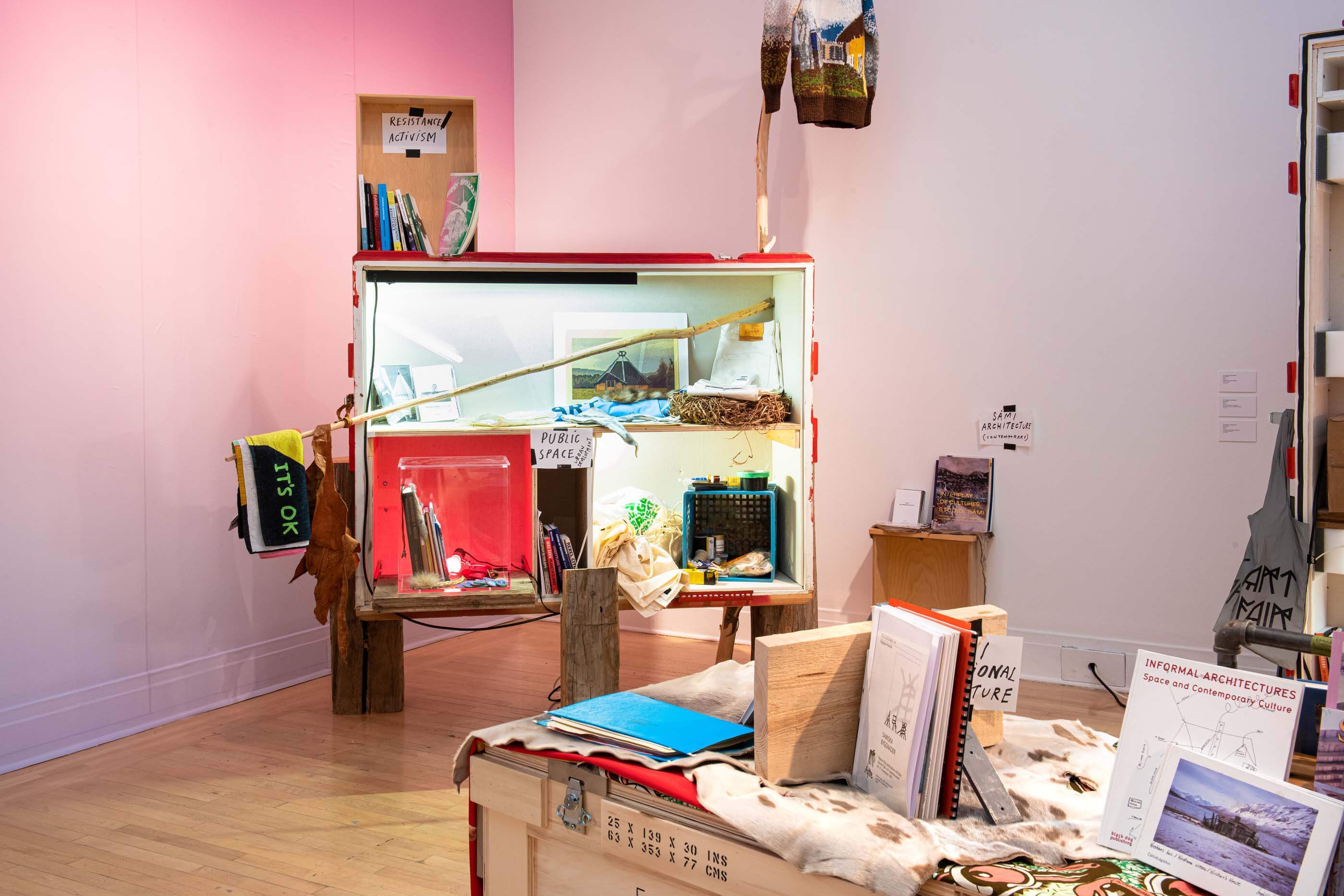
I’m Calling Home by Geronimo Inutiq presents a matchbox house animated by childhood photographs and a radio playing a virtual broadcast specially commissioned for the exhibition. Radio is central to Inutiq’s sense of home, for it connects Inuit both near and far. The installation invites visitors to reflect not only upon how languages thrive (his mother was the among the first radio presenters to broadcast in Inuktitut), but also to question the role of technology in Indigenous societies. Industrial technology facilitated colonialism and an extractive relationship to northern landscapes. But an innovative, flexible, and finely tuned connection to technology such as radio also shapes Inuit and Sámi culture and provides the form and the content of Inutiq’s oeuvre.
Making Room is a recorded conversation between Partridge and Laakkuluk Williamson Bathory. Each is shown life-size on a separate projection screen, an empathetic witness to the other’s testimonial. Partridge notes that as Inuit people, she and Laakkuluk live inside institutional structures (such as Canada’s health, justice, and housing systems) without being part of them. Their forceful on-screen presences invite visitors into the spaces of their monologues, which address the housing crisis in Iqaluit, Nunavut. Together, they poignantly describe Aanersaq, a strip of land in central Iqaluit upon which many homeless Inuit seek shelter, as “an oasis for Inuit who have nowhere else to go.”
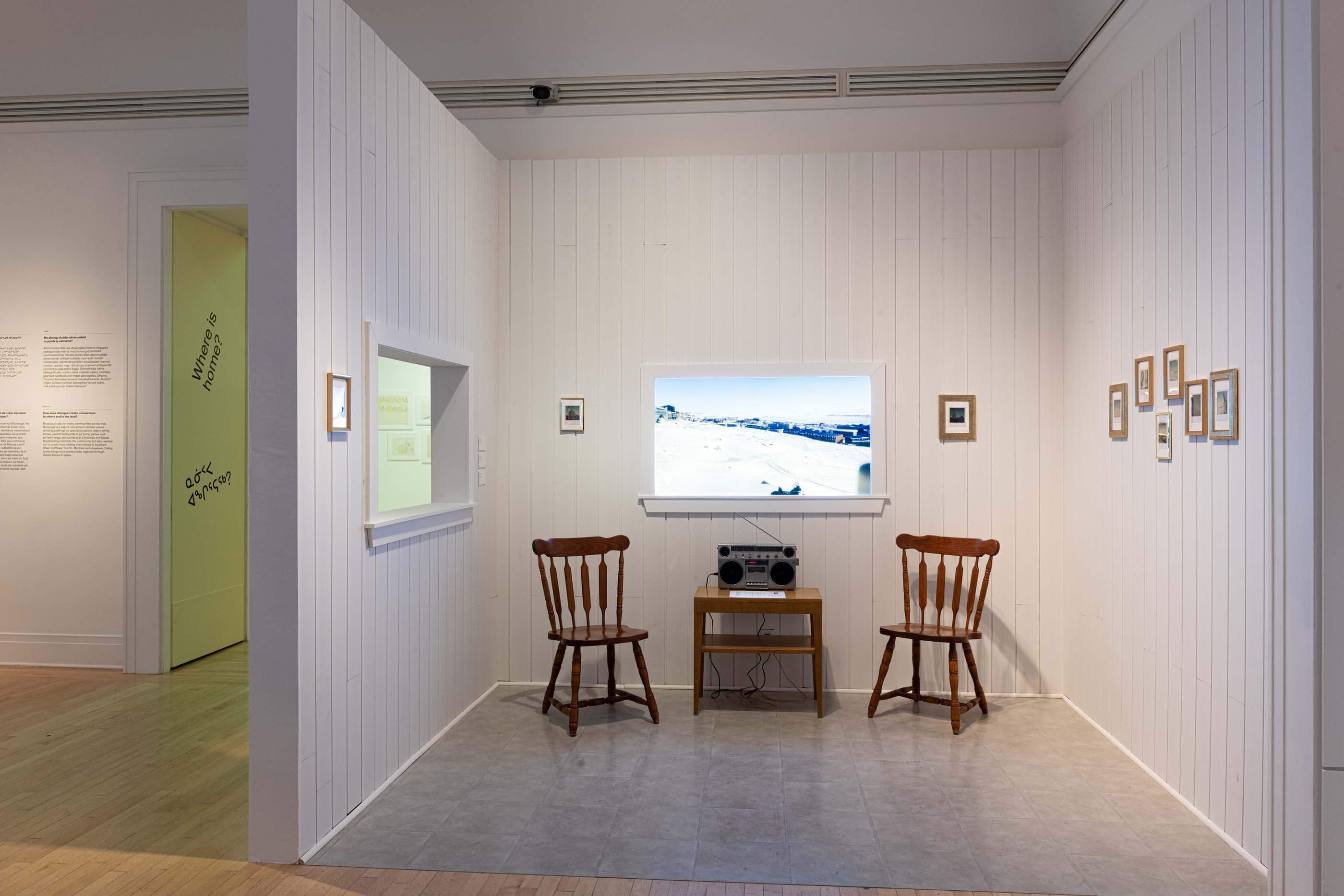
In recent years, Canadian society has been preoccupied with efforts at conciliation between the Canadian state, with its majority population of settlers and immigrants, and the Indigenous inhabitants of its territory. These efforts have been marked by sincere if sometimes meaningless gestures, hampered by awkwardness, and obstructed by an outright refusal to re-imagine Canada’s constitutional order upon new lines. The recent discoveries of mass graves at many sites of former Residential Schools (to which approximately 150,000 Indigenous children were forcibly sent between 1831 and 1996) have only added to the sense that a much needed reckoning with Canada’s colonial past can no longer be delayed.
Since the 1960s, the Canadian state became more representative of its changing populace through successive bilingual and multicultural impulses. Conciliation with Canada’s first peoples calls for something else—namely, a dialectical process balancing pluralist universalism and Indigenous sovereignty, all under the shadow of growing global ethno-nationalist trends. The movement for Indigenous self-determination challenges Canada’s economic dependence upon resource extraction, a reality whose legacy of environmental catastrophes was the subject of the CCA’s exhibition It’s All Happening So Fast (timed to coincide with Canada’s sesquicentennial in 2017). Nango himself notes the extent to which today’s “green” economies are frequently in conflict with Indigenous land practices; this was explored by Sámi artists at this year’s Venice Architecture Biennale.
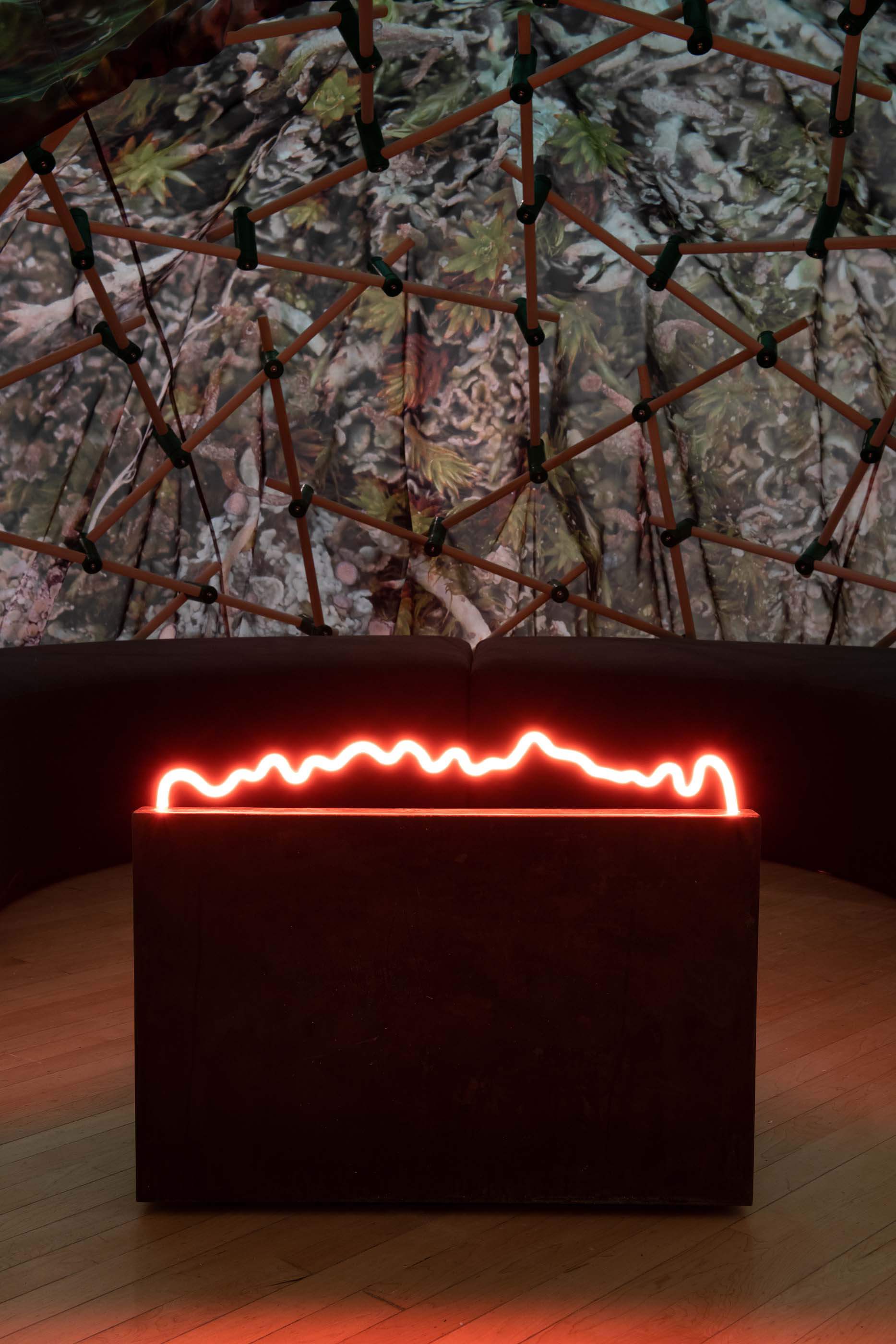
Museums have been at the forefront of revaluating Canadian history and culture and have frequently become flashpoints in this process. In 2015, less than four percent of arts professionals in leading Canadian museums were Indigenous. Recent efforts to transform the space of the Canadian museum include the National Gallery of Canada’s powerful Àbadakone | Continuous Fire | Feu continuel exhibition (2019) and the 2021 opening of Qaumajuq at the Winnipeg Art Gallery. Designed by Michael Maltzan Architecture with Cibinel Architecture, the latter displays Inuit art, offering a much-needed bridge between northern cultures and southern institutions.
In Montréal, the CCA has begun a process to “facilitate [its] long journey toward fostering affirmative relationships with Indigenous and other peoples across Tiohtià:ke/Mooniyang/Montréal.” To do so, the CCA seeks to “unlearn” institutional practices which it has used since opening in 1989. New fellowships for Indigenous designers and scholars are central to these efforts, which are meant to open the institution in support of their voices.
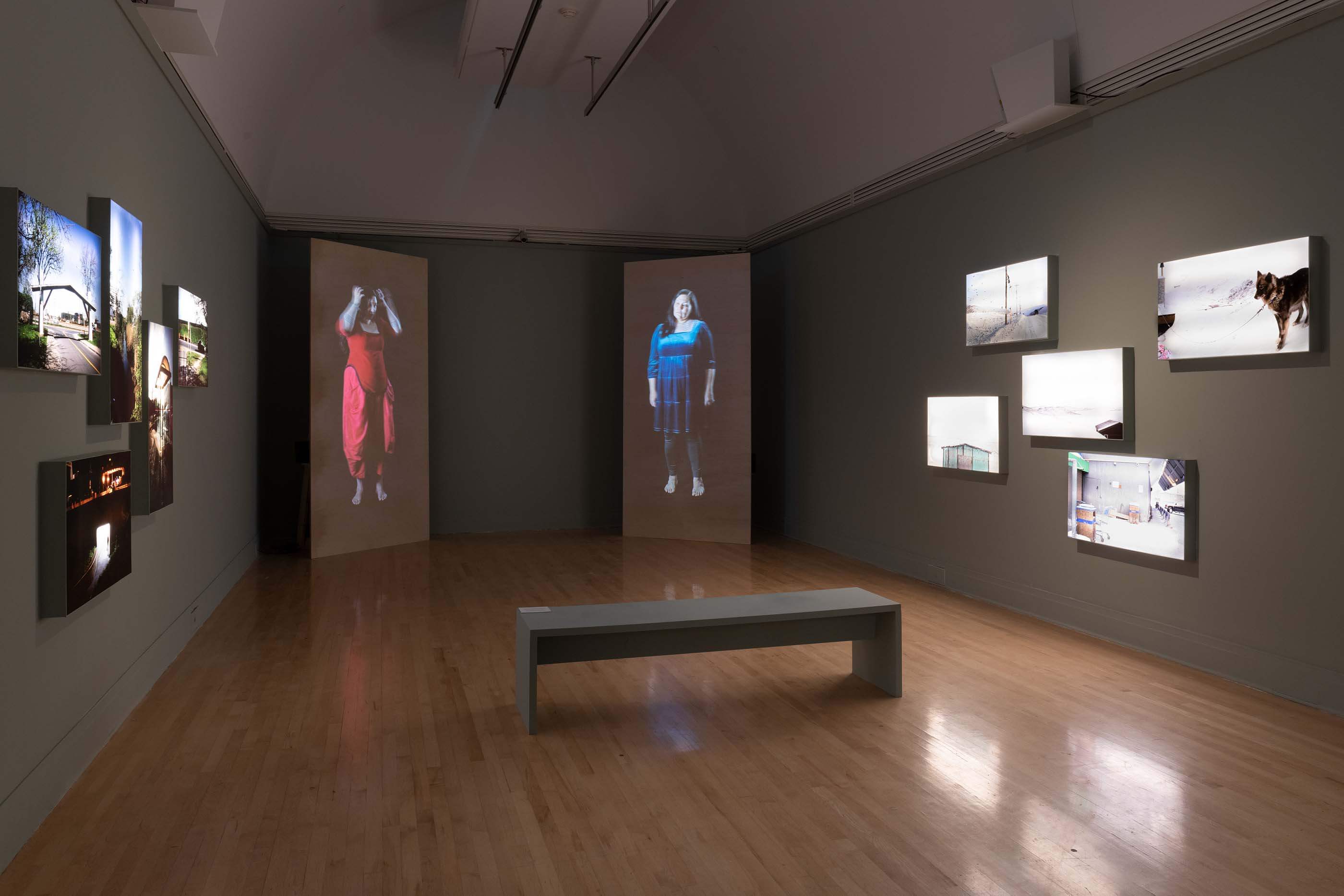
Faced with this pertinent yet constraining Canadian context—which threatened to subsume all nuanced ideas of “home”—the curators chose to set aside the colonial geography of settler nation-states in favor of a trans-Arctic approach. What binds Inuit, Sámi, and the other Indigenous peoples of the Arctic together? Certainly, an anti-assimilationist spirit of resistance and a desire to vindicate their rights to their traditional lands and lifestyles. Likewise, their shared climate and landscape suggest the existence of what Ruiz terms a “Global North,” which has engendered related cultural approaches to inhabiting the Arctic.
The curators worked to proclaim a more universal—and perhaps geographically transferable—bond between their peoples through a shared attitude towards inhabiting the land, one which predates and exists outside of late capitalism. This common attitude based upon oral tradition and lived experience in the Global North is what Towards Home’s curators wish to share with its southern audience. As Nango notes in conversation with Ruiz, “There are certain practices that every human being could embed more in their lifestyle and in the way they see the world. Listening, for example, is one of them—challenging this constant urge to always have control over processes and the economy and flows of resources.”
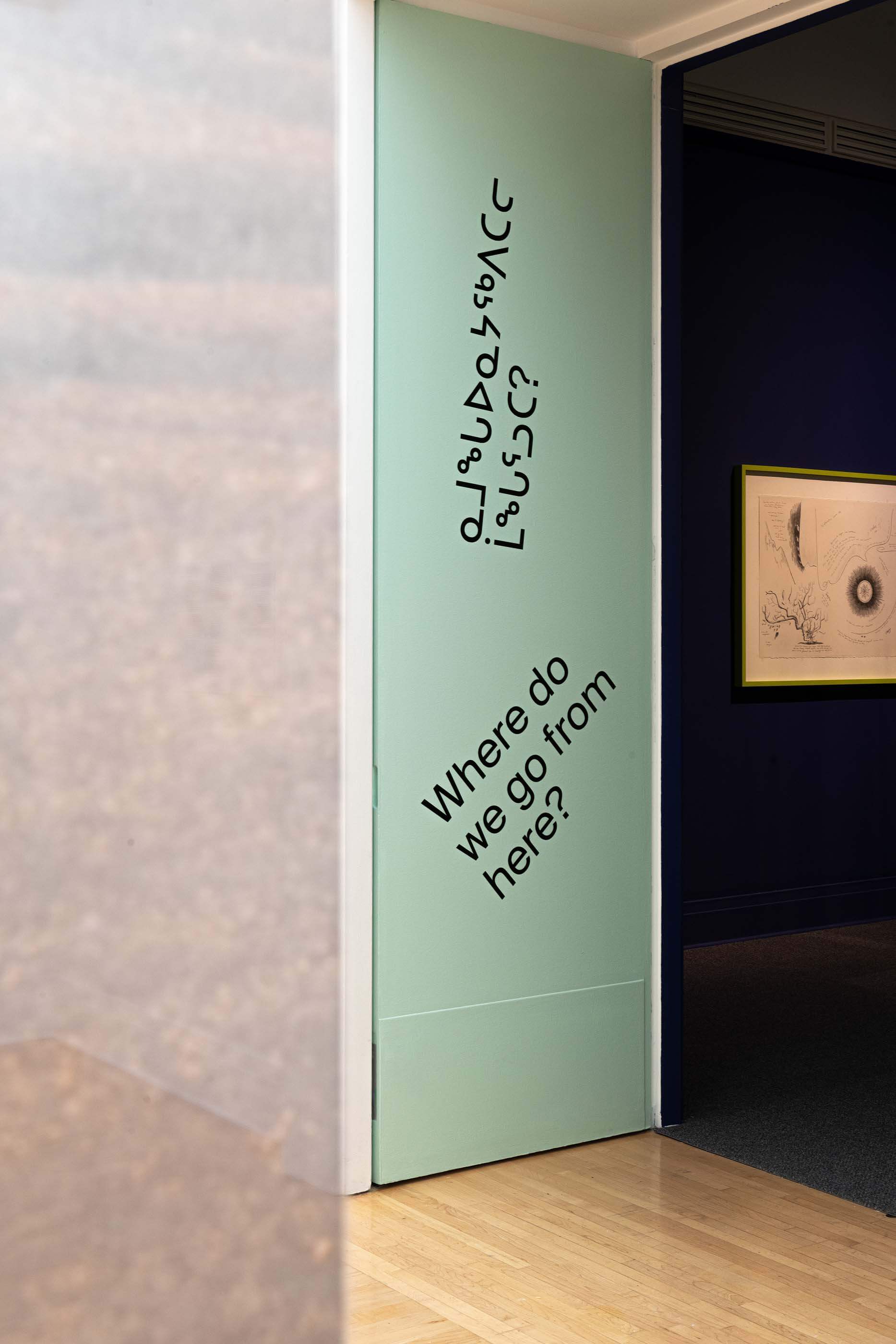
Nango’s Sámi Architectural Library (2018), has been re-created in Towards Home’s final gallery. As an architecture student years earlier in Oslo, Nango was angered by the absence of Sámi culture in his curriculum and the paucity of materials with which to correct this. His vision for a nomadic library, one that could (at least in theory) travel between communities by sled, was born out of this lack. Visitors to Towards Home are expressly invited to sit down and read from the library’s collection of printed matter. Nango’s design puts photocopies and pamphlets on an equal footing with glossy, hardback volumes. For him, the library is an example of a place where Sámi and Indigenous people can remove themselves from “the strangling and controlling power structures that capitalist nation-states create when they work with architecture.”
If Partridge’s porch makes a statement for Indigenous presence within the museum, Nango’s library exemplifies the fight for Indigenous knowledge to be taken seriously within settler institutions like the CCA. Taken together, the installations that comprise Towards Home suggest a way forward for Indigenous leadership in the collective endeavor of knowledge creation. As Partridge asserts in an interview with Ruiz and Ella den Elzen, it is “essential that Inuit and Indigenous ideas about our futures be privileged because we are not going away.”
Peter Sealy is an architectural historian and Assistant Professor at the University of Toronto.











